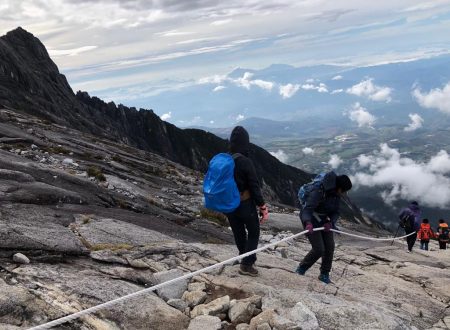Everyman’s Everest author and Corporate trainer John Kam believes a good leader needs to be Fit To Lead and this means having to first conquer all his personal mountains. Siks Mikah @Chalkboard finds out John’s route there.
Poets, writers, journalists, philosophers…they all have plenty to say about the proverbial climb up the mountain.
It is often used as an analogy to human struggles and arduous task to achieve personal goals and in their careers.
In fact, you may also sing about it as Julie Andrews did in the song Climb Every Mountain in the musical Sound of Music. A song about moving each step forward in attaining a dream.
And, it is without doubt that the climb whether for love, dreams or personal achievements would be full of challenges and difficulties.
But one can actually gain a lot from the mountain besides proving oneself to be physically fit to have made it to the top.
“It’s not about climbing the mountain…it’s about climbing the mountains of your life,” says CEO of D Jungle People and corporate trainer John Kam who has climbed Mount Kinabalu seven times.
 Just back from running a programme “Fit for Life” for the best and brightest from a bank, John explains that it was a 9-month journey that ended with the group climbing up Mount Kinabalu.
Just back from running a programme “Fit for Life” for the best and brightest from a bank, John explains that it was a 9-month journey that ended with the group climbing up Mount Kinabalu.
What’s special about this training programme is that the nine months training required the participants to undergo corporate coaching besides fitness coaching.
“We use the analogy of physical fitness or the acquisition of physical fitness to be acquisition for corporate skills. It was an exciting 9 months because there is a very clear goal that after 9 months we would have to climb a mountain.
“I think a lot of people underestimate the work they have to put into leadership (development) and we mean the skills and competencies to acquire. Most people in the corporate world pick up certain skills along the way as they go through their work. And if you are lucky you get the certain skills that allow you to be promoted.
“But with Fit To Lead we have a focused approach towards picking up whatever skills you think you require for your next move and chances are you will pick up those skills much faster and much better.”
There are three aspects to this leadership programme. The obvious one is being physically fit but it’s a tough one for a lot of people. People in the corporate arena often neglect their physical well-being in the pursuit of power and position.
“If you get out of breath walking up a flight of stairs, how do you lead an entire organisation? How do you stay healthy enough to lead. So I think physical fitness is underrated in the corporate world.
“If I am leading an organisation and fall ill, I will not be able to dispense duties and that will have serious repercussions to the organisation. You have to be physically fit and healthy and the higher up you go in the organisation the fitter and healthier you should be,” John advises.
He feels that generally it’s the the other way around. Corporate leaders tend to spend less time going to the gym, runs or walks. However, those at the C-Suite level are pretty fit.
“I know quite a number of CEOs who have 15-minute lunches so that they can go to the gym for a workout. I know a couple of senior VPs who wake up at 4am to go for a run before they go to work. These guys they go for a hike, for runs and long workouts over the weekends.
“One of the things that sets them apart from the rest is discipline. If you cannot control your own body it’s difficult to control other people in the organisation.
“Think of this as an investment in yourself and also the people around you,” John adds.
The second aspect to the programme is mental strength – resilience and sharpness. “We have all the tools around us that should enable us to be mentally sharp and efficient. We have ease of information and allows us to multitask. However, we become less sharp mentally because we outsourced our thinking to Google and we don’t think anymore.”
Fit To Lead addresses these problems by getting participants to exercise their brain by gathering information, solving problems and making decisions. Being mentally resilient also means being able to handle the barrage of information and amount of work they encounter daily.
“A lot of people, especially those who have not climbed the mountain, underestimate the importance of being mentally resilient. If you are not ready for it there are times in the mountain where you would breakdown and cry.”
The third and final aspect is emotional stability. It is critical for a leader to nurture all three together to let the people they lead feel a sense of stability. “They need to feel comforted and confident that their boss or supervisor is not easily shaken especially in the face of adversity.
 The huge sense of achievement experience after the climb was not just about having made it to the top and back. According to John, what the participants didn’t realise was the mountain was climbed 9 months before when they had to identify and build the skills and competencies needed to make that climb.
The huge sense of achievement experience after the climb was not just about having made it to the top and back. According to John, what the participants didn’t realise was the mountain was climbed 9 months before when they had to identify and build the skills and competencies needed to make that climb.
After 9 months of discipline in acquiring skills and physical training the participants are likely to to continue to carry on the new skills as a habit or routine as part of their lifestyle.
“If you are fit you are able to do a better job at leading,” John concludes.
Siks Mikah gives a moment or two to reflect on everyday scenarios in and about the HR and corporate environment in Chalkboard.Djunglepeople.com, a learning platform by D Jungle People.
